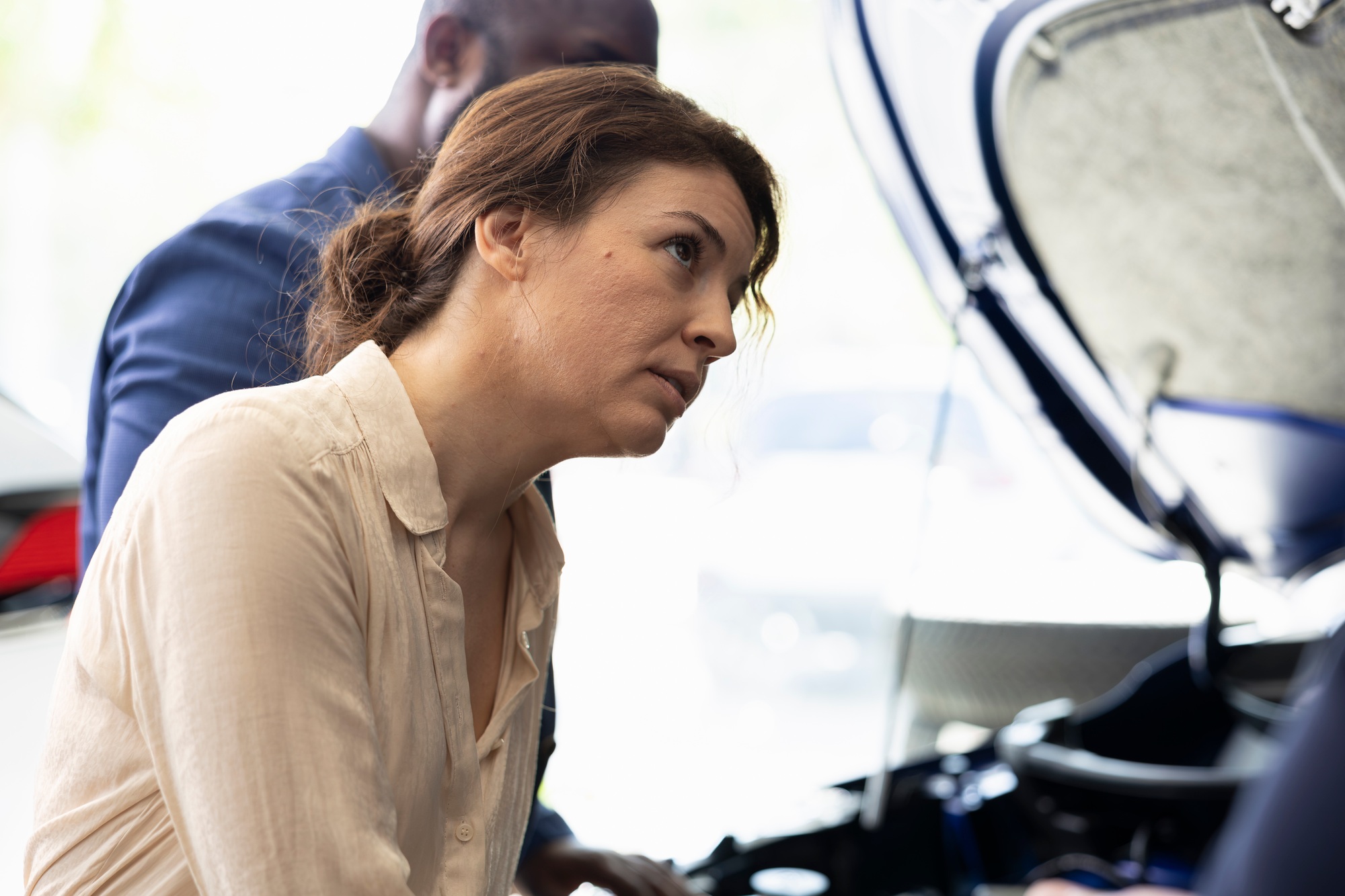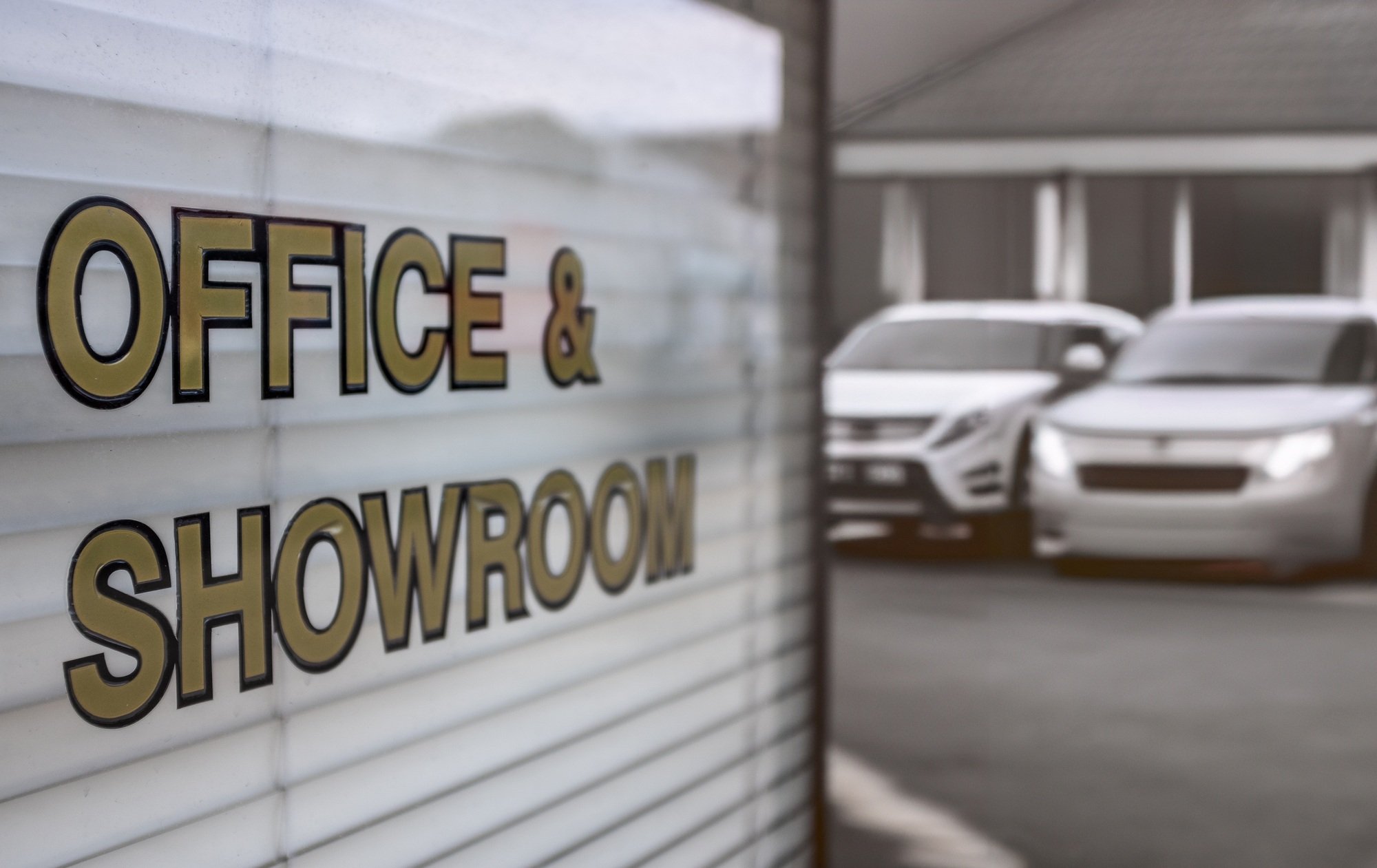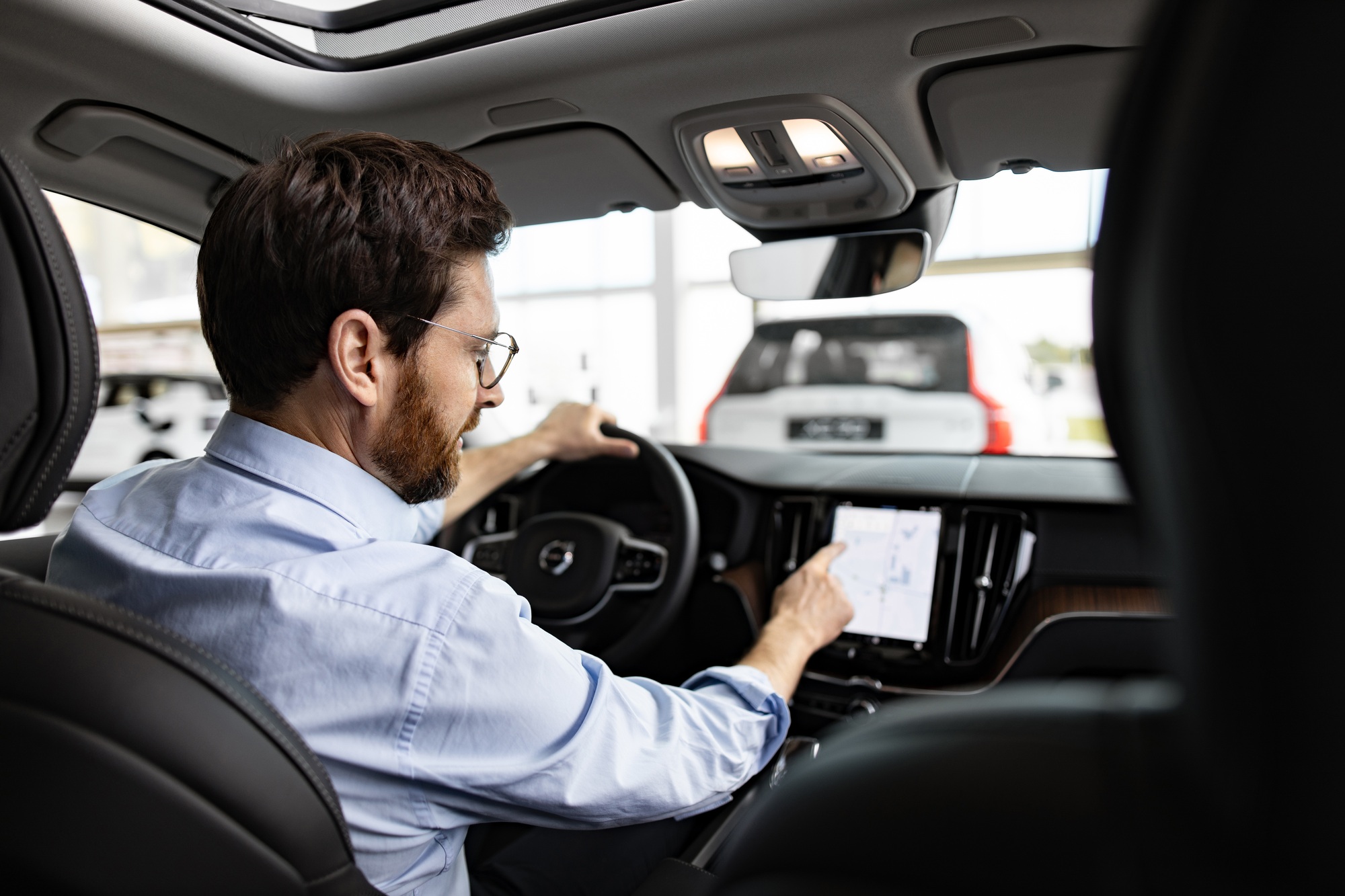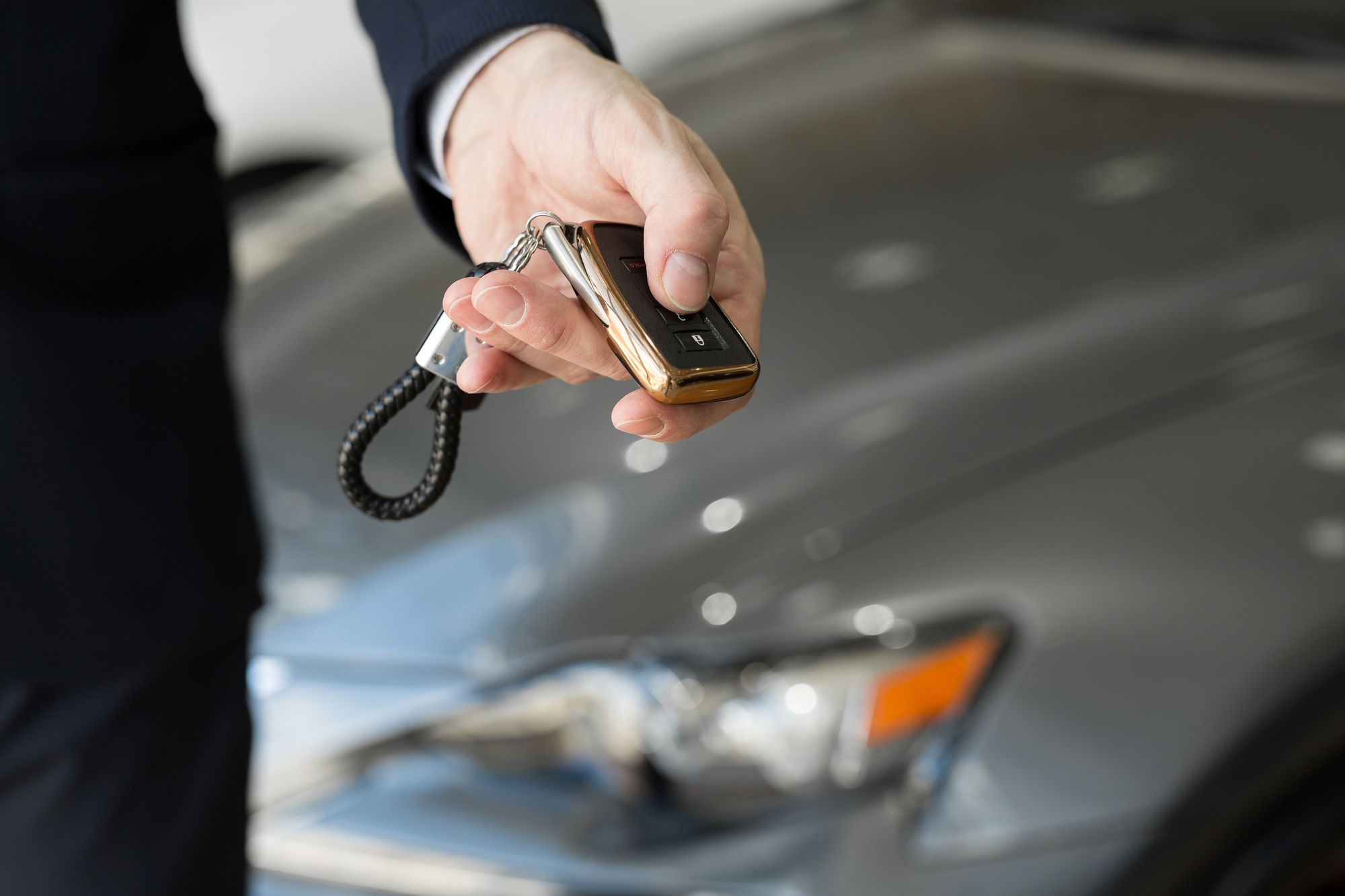Key Takeaways

- Market Research is Key: Conduct thorough analysis of local demand and competitor offerings to identify target customers and popular vehicles.
- Develop a Comprehensive Business Plan: Outline your dealership’s vision, financial goals, and strategies to guide your operations and foster growth.
- Choose the Right Location: Select a strategically visible and accessible site that caters to your target market, ensuring high foot traffic for better customer engagement.
- Understand Legal Requirements: Obtain necessary licenses and permits, and choose an appropriate business structure to comply with local regulations and protect your interests.
- Effective Marketing Strategies: Leverage both online and offline marketing methods, including SEO, social media, and community engagement, to boost visibility and attract potential buyers.
- Prioritize Customer Service: Train staff to address inquiries professionally, provide a welcoming atmosphere, and maintain high vehicle standards to enhance the overall customer experience.
Thinking about starting a used car dealership? You’re not alone. The automotive market is booming, and with the right strategy, you can carve out a profitable niche. Whether you’re a car enthusiast or an aspiring entrepreneur, this venture offers exciting opportunities for growth and success.
Navigating the world of used cars can be daunting, but with the right knowledge and preparation, you can turn your passion into a thriving business. From understanding your target market to securing financing and choosing the perfect location, each step is crucial. Get ready to dive into the essentials of launching your own dealership and setting yourself up for success in this competitive industry.
How to Start a Used Car Dealership

Starting a used car dealership involves specific steps that ensure potential success in the small business landscape. Follow these steps to lay a solid foundation for your dealership.
- Conduct Market Research
Understand your target audience by analyzing local demand for used cars. Gather data on popular makes and models, pricing trends, and competitor offerings.
- Develop a Business Plan
Create a comprehensive business plan detailing your dealership’s vision, target market, financing strategy, and sales projections. Include specific goals for your small business over the first three years.
- Secure Financing
Obtain funding through personal savings, bank loans, or investors. Consider costs for inventory, leasing a location, licenses, and operational expenses.
- Choose a Location
Select a strategic location with high visibility and accessibility to attract customers. Look for locations near busy roads or areas frequented by potential car buyers.
- Obtain Licenses and Permits
Secure the required licenses and permits to operate legally. Check local regulations for dealership-specific requirements and ensure compliance.
- Build Relationships with Suppliers
Establish connections with wholesalers and auctions to source quality used cars. Building strong relationships ensures a steady inventory supply and competitive pricing.
- Create a Marketing Strategy
Develop an effective marketing strategy utilizing online and offline channels. Engage through social media, local advertising, and community events to raise awareness of your dealership.
- Set Up Operations
Organize dealership operations, including staffing, customer service protocols, and selling processes. Implement systems for inventory management and financing options for customers.
By following these steps, you position yourself effectively in the used car market and increase the likelihood of your small business thriving.
Researching the Market

Effective research sets the foundation for your used car dealership success. Focus on local demand and competitor analysis to create a strategy tailored to your area.
Understanding Local Demand
Assess local preferences and buying patterns. Investigate popular vehicle types among potential customers, such as sedans, SUVs, or trucks. Gather data on demographic factors like age and income levels, which influence purchasing decisions. Utilize surveys and online tools to capture insights about customer needs and expectations. Analyzing local demand helps pinpoint ideal inventory selections that attract buyers effectively.
Analyzing Competitors
Identify existing dealerships in your vicinity. Examine their pricing strategies, inventory quality, and customer service reputation. Take note of their marketing efforts and online presence, including website usability and social media engagement. Use this information to differentiate your dealership, addressing gaps in the market. A thorough competitor analysis enables you to position your small business uniquely, ensuring a competitive advantage within the local market landscape.
Creating a Business Plan

A solid business plan serves as the foundation for your used car dealership. This plan must encompass essential elements that outline your strategy and goals.
Defining Your Business Model
Define your business model by identifying the type of used car dealership you intend to establish. Consider factors such as specializing in a specific car segment like luxury, economy, or trucks. Assess whether you will offer additional services such as financing options or maintenance. Establishing a clear business model assists in targeting the right customer base effectively.
Setting Financial Goals
Set measurable financial goals to guide your dealership’s growth. Include targets for sales volume, profitability, and cash flow. Specify short-term goals for the first year alongside long-term objectives for the next three to five years. These goals provide a framework for evaluating performance and strategies for achieving success in your small business venture.
Estimating Start-Up Costs
Estimate start-up costs meticulously to ensure sufficient financing. Include expenses such as dealership licensing fees, inventory acquisition, property leasing, insurance, and marketing initiatives. Allocate funds for operational costs such as employee salaries and utilities during the initial phase. This comprehensive cost assessment provides a clear financial picture and supports informed decision-making.
Legal Requirements

Understanding legal requirements is essential for starting a used car dealership. Compliance with regulations ensures smooth operations and protects your business.
Choosing a Business Structure
Select a suitable business structure for your dealership. Options include sole proprietorships, partnerships, limited liability companies (LLCs), or corporations. An LLC offers liability protection while facilitating tax flexibility. Each structure affects your personal liability and tax obligations differently. Evaluate these implications thoroughly to determine the best fit for your small business.
Obtaining Necessary Licenses and Permits
Obtain the required licenses and permits to operate legally. Most used car dealers must comply with the Federal Trade Commission’s (FTC) Used Car Rule, mandating the display of a Buyers Guide on each vehicle for sale. This rule applies in all states, except Maine and Wisconsin. Additionally, register your business with the Secretary of State and secure a tax registration from your state’s Department of Taxation. These steps prevent regulatory issues that could hinder your operations.
Understanding Tax Obligations
Understand your tax obligations as a dealership owner. Federal, state, and local taxes apply to your operations. Stay informed about sales tax requirements on vehicle sales and income tax liabilities. Consulting with a tax professional can provide guidance, ensuring compliance and optimal tax management for your small business.
Finding a Location

Choosing the right location plays a crucial role in the success of your used car dealership. Focus on several key factors to ensure optimal visibility and accessibility.
Choosing the Right Zoning Area
Select a zoning area that permits automotive sales. Verify that local regulations allow for a used car dealership to operate in that area. Compliance with zoning laws guarantees that business operations proceed smoothly and without legal issues. Research local ordinances to identify areas that offer the most favorable conditions for a small business focused on used car sales.
Evaluating Foot Traffic
Assess foot traffic in potential locations. High foot traffic increases visibility and opportunities for customer engagement. Analyze peak times for pedestrian and vehicle traffic, ensuring ample exposure to your dealership. Locations on main roads or near busy intersections frequently draw more potential customers. Consider the demographics of passers-by, particularly in relation to your target market.
Negotiating Lease Terms
Negotiate lease terms that align with your business goals. Favorable lease agreements minimize start-up costs and maximize profitability. Aim for a competitive rent rate compatible with your financial projections. Include options for lease extensions and potential subletting in negotiations. These clauses can provide flexibility as your business grows.
Acquiring Inventory

Acquiring inventory is crucial for sustaining your used car dealership. Focus on effective sourcing methods, thorough inspections, vehicle evaluations, and strategic pricing to ensure profitability.
Sourcing Used Cars
Sourcing quality used cars involves multiple methods. Participate in auctions to access a diverse range of vehicles. Closed auctions provide exclusive inventory while open auctions allow public access. Assess each car’s condition and market demand actively. Consider trade-ins from customers. Trade-ins enhance your inventory and vary in condition. Evaluate and possibly recondition these vehicles before placing them for sale. Direct purchases from private sellers or wholesale dealerships also serve as viable sourcing options.
Inspecting and Evaluating Vehicles
Inspecting and evaluating vehicles ranks high in importance. Conduct comprehensive inspections covering exterior and interior conditions. Assess engine performance and check for any mechanical issues. Use an Odometer reading to gauge mileage and potential wear. Review the vehicle history report to identify past accidents or title issues. Evaluate the market value of each vehicle to ensure competitive pricing while maintaining profit margins.
Setting Pricing Strategies
Setting effective pricing strategies impacts your sales success. Research local market trends to determine competitive price points. Consider vehicle condition, make, model, and mileage during the pricing process. Implement a pricing structure that includes negotiation room to entice buyers. Regularly reassess pricing based on changes in demand or inventory levels to optimize sales profitability.
Setting Up Your Dealership

Setting up your used car dealership encompasses multiple essential steps that maximize visibility and efficiency.
Establishing a Showroom
Create a professional showroom that enhances vehicle display. Design an inviting layout that showcases your inventory effectively. Invest in proper lighting to highlight vehicle features and establish a clean environment. Incorporate comfortable seating areas for customers waiting during negotiations. Utilize branding materials, including signage and brochures, to convey your dealership’s identity and values.
Building an Online Presence
Establish a robust online presence essential for attracting customers. Create a user-friendly website featuring your inventory, services, and dealership information. Implement SEO strategies to target relevant keywords, helping potential buyers find your dealership easily. Utilize social media platforms like Facebook and Instagram to engage with your audience through regular updates and promotions. Consider online advertising campaigns to reach local buyers effectively, driving traffic to both your website and physical showroom.
Implementing Sales Processes
Develop streamlined sales processes to enhance customer experience. Train your sales team on best practices for customer interactions, focusing on product knowledge and effective communication. Establish clear protocols for conducting vehicle inspections, appraisals, and financing options to ensure consistency in transactions. Utilize customer relationship management (CRM) tools to track leads, follow up with clients, and manage sales data efficiently. Set performance metrics to evaluate sales team effectiveness and drive continuous improvement.
Marketing Your Dealership

Effective marketing serves as a cornerstone for your used car dealership’s success. Focus on both online and offline strategies to attract potential buyers.
Creating an Advertising Strategy
- Develop a comprehensive marketing plan that incorporates diverse channels.
- Utilize traditional methods like print ads and flyers in local newspapers and community boards.
- Leverage digital marketing techniques including website optimization, search engine optimization (SEO), and targeted online advertising.
- Use localized keywords to improve online visibility and attract nearby customers.
- Set measurable goals for advertising campaigns to assess effectiveness and ROI promptly.
Leveraging Social Media
- Create engaging profiles on social media platforms such as Facebook, Instagram, and Twitter.
- Share high-quality images and videos of your inventory to showcase available vehicles.
- Offer promotions and sales events exclusively through social media channels to drive customer engagement.
- Use customer testimonials and success stories to build trust and encourage shares.
- Implement strategies for regular posting to maintain an active presence and communicate with your audience consistently.
Networking with Other Businesses
- Establish partnerships with local businesses such as repair shops, car washes, and insurance agencies.
- Attend community events to promote your dealership and connect with potential partners.
- Collaborate on joint promotions to provide added value to your customers.
- Utilize business networking platforms to expand your connections within the automotive industry.
- Promote mutual referrals to enhance your customer reach and strengthen local business relationships.
Hiring Staff

Hiring the right staff for a used car dealership significantly impacts overall success. Focus on recruiting individuals with the skills and experience that match specific roles.
Defining Roles and Responsibilities
Establish clear roles and responsibilities to streamline operations. Key positions include:
- Car Sales Executive/Salesperson: Prioritize candidates possessing sales experience and excellent communication skills. Look for individuals who engage customers in a friendly manner. Hospitality or customer service experience enhances their suitability.
- Automotive Technician: Hire technicians with a minimum of three years of experience in auto repair or painting. Ensure these professionals can participate in ongoing factory or dealership training. Proficiency in industry-specific software and tools is essential.
Training Employees
Implement a comprehensive training program to equip staff with necessary skills. Provide training that covers:
- Sales Techniques: Offer workshops on effective sales strategies. Include role-playing scenarios to enhance customer interaction skills.
- Technical Skills: Conduct hands-on training for automotive technicians. Focus on both repairs and diagnostics to ensure problem-solving capabilities.
By defining specific roles and implementing targeted training programs, you empower your small business to operate efficiently and effectively in the competitive used car market.
Operating Your Dealership

Operating a used car dealership efficiently requires effective strategies across various areas, including sales techniques, finance management, and customer service.
Implementing Sales Techniques
- Develop an effective sales strategy by training your sales team in proven techniques, such as consultative selling.
- Utilize a structured sales process to guide customers from initial contact through closing.
- Emphasize the importance of building rapport with customers and addressing their needs actively.
- Offer competitive pricing and flexible financing options to attract a wider customer base.
- Monitor sales performance metrics regularly to fine-tune strategies and improve outcomes.
Managing Finances
- Establish a robust financial management system to track income and expenses accurately.
- Create monthly budgets to control operational costs and allocate funds effectively for inventory, staffing, and marketing.
- Monitor cash flow consistently to avoid operational hindrances and ensure liquidity.
- Use accounting software or hire professionals to manage bookkeeping, ensuring compliance with tax obligations.
- Consider seeking financial advice to optimize funding sources and investment strategies, especially relevant for small businesses.
Providing Excellent Customer Service
- Train your staff to prioritize customer satisfaction by handling inquiries and concerns promptly and professionally.
- Implement a feedback system to gather customer insights and improve service quality continuously.
- Ensure your dealership maintains high standards in vehicle presentation and maintenance, enhancing the buying experience.
- Foster a welcoming atmosphere in the dealership by creating a comfortable environment for customers.
- Encourage follow-up communications with customers after sales to build long-term relationships and encourage referrals.
Troubleshooting Common Issues

Addressing issues is vital to maintaining a successful used car dealership. Two common challenges include handling unsatisfied customers and managing inventory effectively.
Handling Unsatisfied Customers
Listen actively to customer concerns to understand their dissatisfaction thoroughly. Acknowledge their feelings to convey empathy, which can promote a positive dialogue. Offer solutions that could range from vehicle returns to alternative options that suit their needs better. Follow up to ensure the resolution meets customer expectations, fostering loyalty. Lastly, document interactions to refine processes and identify recurring issues that need attention.
Managing Inventory Challenges
Monitor inventory levels to prevent shortages or overstock situations that can affect cash flow. Assess market trends regularly to adjust inventory selections aligning with demand. Implement a tracking system for vehicles to streamline management and enhance visibility in stock. Build relationships with suppliers to secure a steady flow of quality vehicles. Evaluate pricing strategies consistently to ensure competitive rates that attract buyers without sacrificing profit margins.
Conclusion

Starting a used car dealership can be a rewarding endeavor if you approach it with the right mindset and preparation. By understanding your market and developing a solid business plan you can create a foundation for success.
Focus on building strong relationships with suppliers and ensuring compliance with all legal requirements. Investing in marketing and customer service will set you apart in a competitive landscape.
With dedication and strategic planning you can turn your passion for cars into a thriving business. Embrace the journey and stay adaptable as you grow your dealership.
Frequently Asked Questions

What are the key steps to starting a used car dealership?
To start a used car dealership, conduct thorough market research, create a comprehensive business plan, secure financing, and choose a strategic location. Obtain the necessary licenses and permits, build relationships with suppliers, and develop a strong marketing strategy to attract customers.
How important is market research for a used car dealership?
Market research is crucial as it helps you understand local demand, customer preferences, and competitor pricing strategies. This information allows you to tailor your inventory and services to meet market needs, boosting your dealership’s chances of success.
What types of financing options are available for starting a dealership?
Financing options for starting a dealership include personal savings, bank loans, credit unions, dealership grants, and private investors. It’s essential to explore various avenues and select the one that best aligns with your financial goals and business plan.
What legal requirements should I consider?
Legal requirements for starting a used car dealership include selecting a business structure, obtaining the necessary licenses and permits, and complying with regulations like the FTC’s Used Car Rule. Consulting legal and tax professionals can ensure compliance and smooth operations.
How can I effectively source inventory for my dealership?
Effective inventory sourcing can be achieved through auctions, accepting trade-ins, and purchasing from private sellers or wholesale dealerships. Thorough inspections of vehicles and reviewing their history reports are vital to ensure quality inventory.
What are some effective marketing strategies for a used car dealership?
Marketing strategies include developing a comprehensive marketing plan that incorporates both traditional and digital methods. Use SEO, social media, and targeted online ads to engage customers, and network with local businesses to expand reach.
What is necessary for hiring the right staff?
When hiring staff, define specific roles and responsibilities for positions such as sales executives and technicians. Look for candidates with relevant experience, and implement comprehensive training programs to ensure that they can provide exceptional customer service.
How can I improve customer service in my dealership?
To improve customer service, train staff to prioritize customer satisfaction and practice active listening. Establish a structured sales process, follow up with customers post-sale, and create a positive experience that fosters long-term relationships.
What are common challenges for used car dealerships?
Common challenges include dealing with customer dissatisfaction, managing inventory effectively, and adjusting to market trends. Address these challenges by actively listening to customer concerns and monitoring inventory levels to prevent shortages or overstock issues.
Image Via Envato



